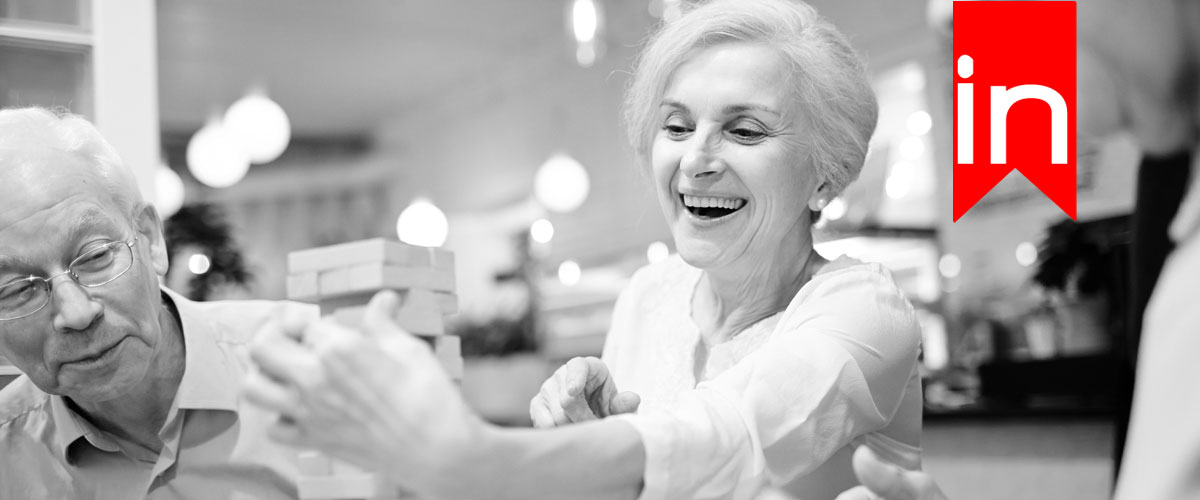Aging in place means growing older at home. As many seniors age, they do not want to move their homes or change their lifestyles significantly. Often times there are many memories and emotional attachments to a home, and the elderly, and even sometimes family members, want to remain in their home longer as they get older. ‘Nothing else looks like home‘ is common thought among the elderly. Although there can be some concerns with seniors aging in place, it can be safe and a positive experience for seniors and their family members.
Highlights
- Aging in place allows seniors to stay in their homes longer, maintaining comfort and independence with familiar surroundings.
- Essential modifications like stair lifts, grab bars, and walk-in tubs enhance safety, accommodating seniors’ mobility and health conditions.
- Utilizing mobility aids such as walkers and medical alert systems can prevent falls and provide crucial assistance, supporting seniors to live safely at home.
Which Would Be An Example Of Aging In Place?
Aging in place are elderly people, ages 65+, living in the home. Some elderly may be living with their spouses, by themselves or with family member(s). It refers to older adults who do not live in an assisted living facilities, nursing homes, or retirement community homes.
How Many People Are Aging In Place?
Approximately 24.6% of the Canadian population 65 and older live alone, according to Statistic Canada. In Canada, most Canadian seniors want to remain in their own homes for as long as possible (Source: Canada.ca). As Canadians are living longer, and more Canadians are reaching the age of 100, they are wanting to stay in their homes longer.
Is Aging In Place A Good Idea?
Numerous studies have shown benefits for aging in place at home. Benefits aging in place:
- Comfort of home and pets;
- Social involvement within the community; and
- Cost-effectiveness.
What Is The Most Important Aspect Of Aging In Place?
The home is a comfortable and familiar place that is more than just a place but also a feeling of safety. As Canadian seniors want to remain in their home more, there are a lot considerations for safety. Seniors who choose to live independently or alone, may have increased safety concerns especially those who may also have mobility issues or a disability. Safety is the number one concern; however, there are many ways to support a seniors choosing aging in place including home modifications and consumer products that can provide a safer environment for seniors.
Common Concerns About Aging In Place
You may be concerned about safety and security, the way you can get around and any other daily activities. Plan for aging in place by creating a flexible plan. Flexibility is required because as older adults age, there will enviably be changes to the condition and requirements an individual may need, including changing health and medical conditions.
Consider the support system an individual may need including family support, financial support, transportation, and mobility aids. As seniors age, mobility may be a key factor in aging in place. Increasing mobility around the home regardless of health conditions, can increase the safety and security of an individual.
Aging In Place For Seniors With Health Conditions
While some seniors may choose to move into an aged care facility, a vast majority continue to live their lives at home aging in place. However, as age sets in, everyday activities may become a challenge, which is why it’s important to recognize that some changes may need to be made around the home. Additionally, if you are a caretaker of a senior with a medical issue, it can be useful to plan ahead for a life lived at home by assessing their situation.
Health Care And Medical Conditions, Including:
- arthritis
- neuropathy
- diabetes
- muscular diseases
- respiratory issues
- multiple sclerosis
- heart or lung problems
- brain injury or stroke
- cerebral palsy
- visual impairment
- blindness
- spina bifida
For example, an old adults living with multiple sclerosis may experience vision loss, pain, fatigue and impaired coordination, making it difficult to move up and down stairs — learning how to support them while they are aging in place will make living at home much easier and safer for everyone. Installing a stair lift to help with their mobility challenges up and down stairs is a great way to increase independent living and safety.
Seniors living independent in own home with health and medical conditions can feel safer by properly preparing the home, you can lower the risk of injury and other hazards for the elderly and foster both positive psychological and physical health–living healthier lives.
Accessibility And Mobility Aids For Seniors Aging In Place With Mobility Issues
Mobility issues shouldn’t stand in the way of living a comfortable life, especially since technology and modern medicine is always moving ahead in leaps and bounds. Whether your mobility is reduced your whole body, or specific areas such as your legs, or you or somebody you know is living with a particular medical condition such as arthritis or cerebral palsy, there are ways to make the home safer and more comfortable, including the use of new technologies such as stair lifts.
Around 24% of individuals 65 years and older experience some sort of mobility issue that can impact everything from daily exercise to simply going up and down the stairs without a second thought. Taking mobility issues as well as a range of other medical issues into account, here is how to set up a home for freedom of movement.
Accessibility is extremely important for making the home a place of comfort and joy – but unless you have purposely built a home from the ground up with accessibility in mind, you will need to take a step back to identify potentially problematic areas. These include:
Stair Lifts
Available in both curved and straight styles, stair lifts greatly reduce trip and fall risks and are suitable for seniors with a range of medical concerns. For example, someone with respiratory issues may find climbing just a single flight of stairs to be quite taxing, leading to an increased fall risk – but a stair lift allows them to ascend and descend safely, secured in place with a seatbelt. Comfortable and reliable, they allow users to make full use of the home.
In fact, stair lifts can be life-saving technology for those living with a range of illnesses. Perhaps someone with diabetes is living with diabetic neuropathy, leading to them losing sensation in their extremities, or a brain injury or a stroke has damaged an individual’s hand-eye coordination. Find the best stair lifts in Canada and what best suits your needs.
Walk-In Bathtubs
Walk-in bath tubs allow elderly to walk into their bath tub. Seniors can step into the tub through a low entry way using minimal effort and movement. This can greatly reduce the chances of falls and accidents and support aging in place. The door provides support and keeps the water in. Often, these tubs are also designed with a seat, grab bars and anti-slip flooring. Find the best walk-in bath tubs for seniors and what best suits your needs.
Ramps
Similar to stair lifts, ramps can make a home much easier to traverse, particularly for those with muscular diseases or similar impairments that have them using a wheelchair. It can be a simple and cost-effective solution to a common problem, able to be installed quickly with some portable options also available.
If you are a wheelchair user, a combination of ramps and stair lifts can make your home more accessible than ever before. While a stair lift cannot hold a wheelchair, having an additional wheelchair upstairs means that even a two-storey home is very much liveable.
Grab Bars & Non-Slip Flooring
Grab bars are particularly important in places such as the bathroom where fall risks and other injuries are more likely to occur. Ensure that they are attached to the wall via screws rather than suction cups, as the strength of suction cups can easily fail. By pairing grab bars with non-slip flooring or mats, you can make the bathroom and other tiled areas of the home even safer.
Walkers
Walkers are affordable, useful mobility aids that can assist the elderly daily and support aging in place. A walker device commonly has 2 or 4 wheels that adds supports while walking or getting up and down from sitting. There are many different features that can be added onto a walker. The basics include a lightweight aluminum frame with rollers (wheels). Some other features include a padded built-in seat and/or storage bags or holders. Despite it’s lightweight, many walkers are designed for medium to heavy weight individuals. Find the best walkers for seniors and what best suits your needs.
Medical Alert Systems
It is estimated that between 20% to 30% of seniors fall each year, so recognizing fall risks – particularly for those who live with muscular diseases, arthritis and similar medical issues. A fall can lead to sustained injuries to the body and impair mobility, in particular to the hips, back, legs, and feet. A fall combined with a head injury can also quite easily lead to an emergency or hospital stay.
Medical alert systems and medical alert system with fall detection are helpful ways to protect seniors who choose to age in place. Medical alert devices signal an emergency call centre, signaling that an accident may have taken place and help may be needed. Once notified the call centre can send alerts to a call list — that may include family member(s) or health care professionals. If deemed an emergency, the call centre will automatically send Emergency Medical Services such as an ambulance to the aid of the seniors. Find the best medical alert systems in Canada that’s best suited for your needs.
There are a few things you can do in order to minimize the risk of a fall. Try to keep the home as free from clutter as possible, and remove or secure loose rugs, wires, and similar trip hazards.
Summary
A house can continue to feel like a home even during senior years with the correct preparation. Physical aspects of the home can be changed to be more accommodating, such as the installation of a chair lift, whilst lifestyle factors including a healthy diet and remaining active and social can go a long way to retaining mobility.



6 thoughts on “Aging In Place: A Guide for Seniors Living At Home”
Are flyers or handout available if so can you tell me where
What a fantastic and informative article on aging in place! Seniors Bulletin has done an exceptional job highlighting the benefits, challenges, and strategies associated with this increasingly popular approach to senior living. For those eager to explore more resources and gain further insights into aging gracefully at home, I highly recommend visiting SeniorThrive.com. SeniorThrive offers a wealth of valuable information, expert advice, and inspiring stories tailored to empower seniors and their families on this journey.